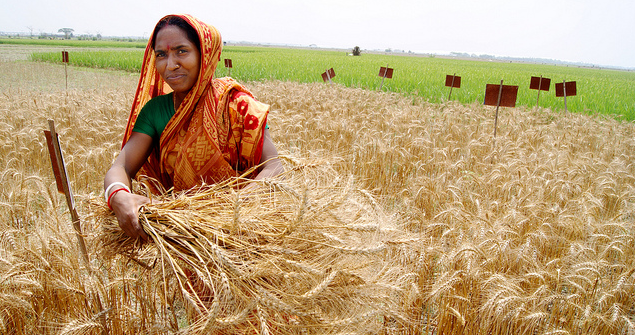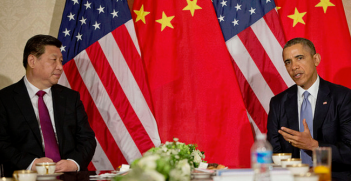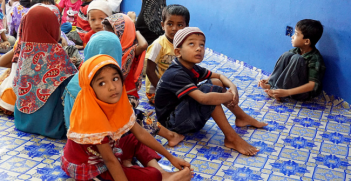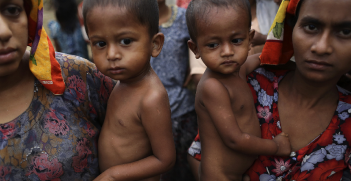A Second Green Revolution?

We need a second Green Revolution to build upon and redress the imbalances of the first.
The original Green Revolution of the late 1960s saw Norman Borlaug transplant high-yielding seed varieties and industrialised farming techniques to India, thus enhancing that nation’s food security. In the decades following, these innovations spread to other developing regions with varying degrees of success. Overall though, they were most effective in boosting agricultural productivity in Asia and Mexico.
However today, these gains have plateaued and there is renewed uncertainty about the future of the Green Revolution.
Of paramount concern is the threat posed by climate change which amplifies the intensity and frequency of extreme weather events, such as prolonged drought and flooding, in the agricultural heartlands of populous developing countries. Bangladesh, which experiences annual flash flooding during the monsoon season, has endured floods and cyclones of increasing intensity and destructiveness, most recently in August 2014. These impose mounting economic costs by affecting vast swathes of rice crops in the region. According to a 2014 report by the World Meteorological Organisation, the incidence of natural disasters in Asia alone has increased fourfold since 1970, a phenomenon which the overwhelming majority of scientists attribute to human-induced climate change.
Furthermore, critics argue that the heavy use of fertilisers and water-intensive irrigation methods initiated under the First Green Revolution produced adverse environmental impacts on a large scale. These impacts are all the more potent given the current trends in population growth in South and South-East Asia, where run-off from fertiliser and pesticide use, depleted groundwater reserves from irrigation practices and reduced soil quality from over-farming undercut any improvements in food security.
Developments such as these reinforce the need for another Green Revolution; one that focuses on the efficient use of finite resources and minimising the environmental impact of agriculture. Proponents of a second Green Revolution assert that advances in genetically modified organisms, or GMOs, have led to the creation of flood-tolerant and drought-resistant crops which can withstand natural disasters and climate shocks in vulnerable primary-producing areas. Indeed, the International Rice Research Institute’s development of ‘scuba rice’ (able to withstand prolonged submergence in the event of flooding) is but one example of how genomics can be appropriated to mitigate the effects of climate change on agriculture. This option has been bolstered in recent months by Indian Prime Minister Narendra Modi’s decision to allow field trials of GM crops, which could become commercially available in two years.
However, measures such as these have been met with opposition on various grounds. Some critics, such as Greenpeace, argue that GM foods are potentially hazardous. But arguably, this concern is a luxury of the developed world; developing countries cannot afford a wholesale dismissal of this technology, without considering it in light of the risk management strategies which could be implemented in conjunction with GMOs.
Meanwhile, others assert that introducing GM crops will make poor farmers dependent on multinationals such as Monsanto, whose patented GM seeds allow them to earn monopoly profits. Notwithstanding the notoriety of Monsanto, this criticism could be addressed by restructuring the patenting scheme to mirror that of the pharmaceutical industry, where patents must have an expiry date, thus enabling competition in the long run. A more successful Green Revolution based on GM crops must also encompass stronger government regulation and monitoring of the industry, to prevent the exploitation of local farmers and land.
Similarly, there is the problem of foreign countries, anxious to ensure their own food security, purchasing arable land in developing regions. This dynamic raises ethical concerns for policymakers in developing regions that need to feed rapidly growing populations, especially those in low-rainfall areas that failed to reap the benefits of the First Green Revolution. A more sustainable alternative would see governments encouraging foreign direct investment in GM seeds and infrastructure for local farmers, in return for a preferential trade agreement under which to export agricultural goods.
Ultimately, we need a second Green Revolution to build upon and redress the imbalances of the first. This must involve a commitment to environmental sustainability and recognition of the acute and increasing vulnerability of the developing world to climate shocks. There must also be an emphasis on distributional equity, so that productivity gains will be spread more evenly across the entire population and not captured by foreign investors and multinationals.
Freya Zemek is an intern at the AIIA New South Wales Branch. This article can be republished with attribution under a Creative Commons Licence.





